Nissan Ariya Vs Ford Mustang Mach-E: Which EV SUV is Right for You?
The Nissan Ariya vs Ford Mustang Mach-E are two popular EV SUV choices. One has been in this space for a few years while the other is all-new.
The Mustang Mach-E is Ford’s feisty EV racehorse, complete with an iconic badge to instil excitement and performance. Entering its second year of production for 2022, the battery capacity is slightly increased. Standard equipment on some trim levels is also revised.
Over at Nissan, the company is finally ready to get the new Ariya on the road. It’s a long awaited model with its release hampered by production delays. But the Ariya represents the next step of Nissan’s road to electrification.
We put the Nissan Ariya vs Ford Mustang Mach-E in a battle of features and capabilities. The goal, to find out which electric crossover comes out on top.
Style
Nissan Ariya: Nissan remarks the Ariya’s design as “timeless Japanese futurism”. Immediately noticeable is the strong “Shield” grille, featuring a 3D “Kumiko” pattern and thin LED daytime running lights. A steeply-raked roofline helps to relieve the weight of the side profile. It cascades into a one piece horizontal light blade at the rear.
SEE ALSO: 2023 Nissan Ariya Hands-On Preview: 5 Things We Learned About Nissan’s Next EVMuch like the exterior, the interior has not been over designed. It follows the “Iki” principle of displaying status in a subdued manner. Featuring a dual-screen setup that combines the cluster with the infotainment system, much of the interior is free from clutter. Unfortunately this also means the absence of mechanical switches and buttons for many key functions. “Zero Gravity” seating offers an underscore on airiness in conjunction with the flat floor layout.
Ford Mustang Mach-E: At its introduction, the Mach-E’s crossover format became intensely controversial. Naysayers despise the use of an iconic nameplate for a tall vehicle, but the design is handsome and athletic. Slender headlights lead the car’s front end design, with a roofline that slopes quickly to the back. At the rear, familiar tail lights cap off the muscular rear wheel arches.
The interior of the Mustang Mach-E is decidedly simple. It relies on an enormous vertically-oriented screen for operating most functions and entertainment. A conventional center console offers storage toward the bottom with the gear selector sitting forward of the armrest.
Bottom Line: Both cars feature modern designs typical of new EV models. But the Mach-E takes a sporty approach to design while the Nissan veers toward leisure and comfort.
Cabin Space
Nissan Ariya: Nissan has yet to release official measurements of the Ariya’s interior. With the flat floor configuration though, we can expect a comfortable level of legroom. The slim profile “Zero Gravity” seats that are found in the front row should also make the Ariya feel open and airy.
Ford Mustang Mach-E: Front row passengers in the Mustang Mach-E have up to 38.9 inches (988 mm) of headroom, 43.3 inches (1100 mm) of legroom, 57.6 inches (1463 mm) of shoulder room, and 55.4 inches (1407 mm) of hip room. In the back, there are 38.2 inches (970 mm) of headroom, 38.1 inches (968 mm) of legroom, 55.9 inches (1420 mm) of shoulder room, and 53.2 inches (1351 mm) of hip room.
SEE ALSO: 2021 Ford Mustang Mach-E Review: EV Power to the PeopleBottom Line: We can’t make a definitive call on a winner without the numbers from Nissan. We are curious how the swoopy roofline of the Ariya affects the interior room compared to the Mach-E.
Nissan Ariya vs Ford Mustang Mach-E: Powertrains
Nissan Ariya: Only offering a single battery option at launch, Nissan gives a choice of single or dual motor configurations. Both attach to a 87 kwH lithium-ion battery with liquid cooling. Single motor Ariyas driving the rear wheels have an output of 238 hp and 221 lb-ft of torque. Dual motor versions are rated for 389hp and 442 lb-ft of torque driven through all four wheels. A smaller 63 kWh battery will become available for next year’s model.
Ford Mustang Mach-E: The Mach-E allows for an array of possible configurations, with two battery pack sizes and single or dual motor setups. The standard-range battery pack is rated for 70 kWh of usable energy. The extended-range battery pack is rated for 91 kWh. Select, California Route 1, and Premium trims can all be configured to be rear-wheel drive or all-wheel drive. The higher performance Mach-E GT is only available with all-wheel drive. Outputs range from 266 hp and 317 lb-ft. on rear-wheel drive cars with a standard-range battery, to up to 480 hp and 634 lb-ft. on the GT Performance Edition.
Bottom Line: Ford offers a wider range of battery and motor options in the Mach-E than the Ariya lineup. This makes it easy to order a Ford EV that fits your needs perfectly. The wild 480 hp Mach-E GT is also something without a counterpart from Nissan.
Efficiency and Range
Nissan Ariya: No official efficiency figures have been released by Nissan. But the Ariya lineup offers EV ranges of up to 304 miles (489 km). All-wheel drive versions of the Ariya will see less range due to additional weight and friction. The Platinum+ trim is good for a range of 265 miles (426 km).
SEE ALSO: Nissan Cuts 2023 Ariya Price By $4,000 Via Cheaper Base TrimFord Mustang Mach-E: Electric ranges vary from 224 miles (360 km) to 314 miles (505 km) as rated by the EPA, depending on the configuration of Mach-E. The Select trim with rear-wheel drive gets 110/96/103 MPGe (2.1/2.5/2.3 Le/100 km) for city, highway, and combined. At the end of the spectrum, the GT Performance Edition is rated for 88/75/82 MPGe (2.7/3.1/2.9 Le/100 km).
Bottom Line: It’s easy to configure the Mach-E to have a comparable EV range as the Ariya. Until official efficiency numbers are available, it’s difficult to declare a winner.
Cargo and Towing
Nissan Ariya: Front-wheel drive Ariyas have the advantage of being less burdened by additional hardware, allowing for 16.5 cubic feet (467 L) in the back behind the rear seats. All-wheel drive models offer a bit less space at 14.6 cubic feet (413 L). No frunk is available with the Ariya. Instead, Nissan’s engineers opted to shift climate control systems under the hood to free up interior space.
Ford Mustang Mach-E: The Mach-E lets you stow away up to 29.7 cubic feet (841 L) of cargo behind the second row of seats. With the rear seats folded down, that number jumps up to 59.7 cubic feet (1,691 L). Walking around to the front, you’ll find 4.8 cubic feet (136 L) of usable storage space in the frunk.
Bottom Line: The Mach-E has more room in the back and a frunk to boot. It’s an easy win for the Ford.
Nissan Ariya vs Ford Mustang Mach-E: Safety
Nissan Ariya: Every Ariya at launch will leave the factory equipped with Nissan’s Safety Shield 360 system. As well, it includes Intelligent Forward Collision Warning, Intelligent Lane Intervention, Intelligent Blind Spot Intervention, ProPILOT Assist with Navi-Link, Intelligent Cruise Control, Distance Control Assist, Traffic Sign Recognition, and Intelligent Driver Alertness. The Evolve trim tacks on rain-sensing wipers. The top-of-the line Platinum trim adds an additional front central seat-mounted supplemental airbag, ProPILOT Park, and ProPILOT Assist 2.0 semi-autonomous driving capabilities.
Ford Mustang Mach-E: Ford has jam-packed the Mustang Mach-E with a host of safety and assistive technology as part of the Ford Co-Pilot360 suite. It includes automatic high beams, blind spot information, cross traffic alert, lane keeping, pre-collision assist, post-collision braking, reverse brake assist, and rear parking sensors. The Co-Pilot360 Assist 2.0 suite also includes Intelligent Adaptive Cruise Control with Stop & Go, lane centering, speed sign recognition, intersection assist, evasive steering assist, and navigation. As an optional add-on for the Select trim and standard on all other trims, the Ford Co-Pilot360 Active 2.0 technology suite includes Active Park Assist 2.0 as well as BlueCruise, which is Ford’s semi hands-free driving technology.
Bottom Line: Active and passive safety tech are staples of electric vehicles. Both the Nissan and the Ford offer very similar packages in this respect.
Tech and Features
Nissan Ariya: At launch, all Ariya models come standard with Wireless Apple CarPlay/Android Auto operating through a 12.3 inch display. Evolve and Platinum trims add a moonroof, 8-way power adjustable front seats, seat memory and heating, a heated steering wheel, wireless device charging, and a color heads up display. The Ariya Platinum also includes a 10-speaker Bose premium audio system as well as cooling and ventilation for the front row.
Ford Mustang Mach-E: As standard, all Mustang Mach-Es come with Ford’s SYNC 4. It wirelessly runs Apple CarPlay and Android Auto through a large 15.5 inch touchscreen located front and center in the cabin. A wireless phone charging pad is also part of the standard equipment on every Mach-E. Select and California Route 1 trims are equipped with a 6-speaker audio system, while Premium and GT trims get a 10-speaker system courtesy of Bang & Olufsen. Heated front seats, heated steering wheel, and seat memory are standard on Premium, California Route 1, and GT cars, but available as part of an optional package on Select Trims. A power liftgate is available on the Select, standard on Premium and GT cars, but curiously missing on the California Route 1 trim.
Bottom Line: When it comes to tech and features, it’s a virtual tie with the Nissan Ariya vs Ford Mustang Mach-E.
Pricing
Nissan Ariya: For its launch phase, the Ariya is offered in the US with a selection of four trim levels. The single motor Venture+ starts at $45,950, plus an additional $1,175 for destination fees. The Evolve+ and Premiere trims pricing starts at $50,125 and $54,625, respectively. The top of the line Platinum+ with its dual motors and all-wheel drive will set you back $60,125, before any government incentives.
Ford Mustang Mach-E: The most accessible Mach-E Select comes in at $44,995, which includes a $1,100 destination charge. The Premium trim will set you back $49,875, while the California Route1 costs $53,550. The performance-oriented Mach-E GT with its 358 kW total output starts at $63,095. You can add all-wheel drive to most trims for an extra $2,700, but it comes as standard with all Mach-E GT models.
SEE ALSO: 2021 Ford Mustang Mach-E GT Review: Quicker, Yet CompromisedBottom Line: The Mach-E spans a larger range of pricing than the Nissan, with the most affordable version coming in at nearly $1,000 less than the equivalent Ariya. The priciest Mach-E GT is almost $3,000 more than the most expensive Ariya, but does offer more performance.
Nissan Ariya vs Ford Mustang Mach-E: In Conclusion
Despite some initial pushback with its marketing, the Mustang Mach-E has proven to be a strong EV contender for Ford. It’s a highly desirable vehicle in the segment, backed by a wide range of powertrain options and offering much more utility than anything else with a Mustang badge attached.
The Ariya looks to be an attractive package, but tentatively falls behind the Mach-E in some key areas. It wouldn’t be fair to declare a winner without having put the Ariya through proper testing, but Nissan will have a lot to prove if it’s to stand up to the rival from Ford.
Become an AutoGuide insider. Get the latest from the automotive world first by subscribing to our newsletter here.
More by Harry Zhou



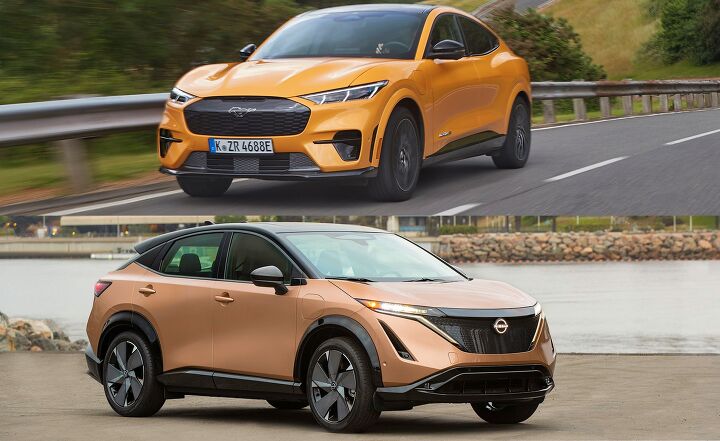
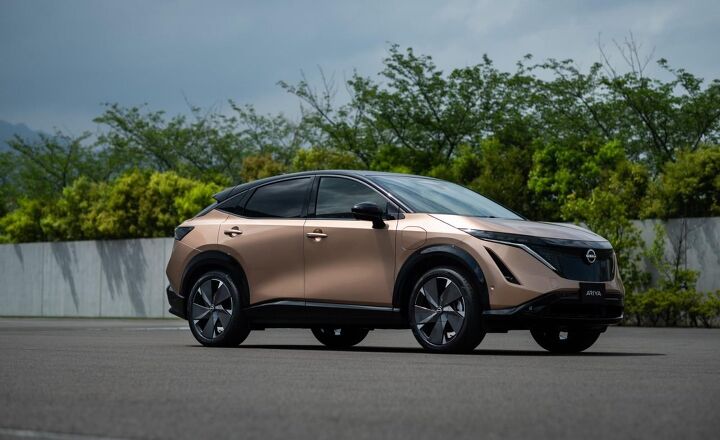


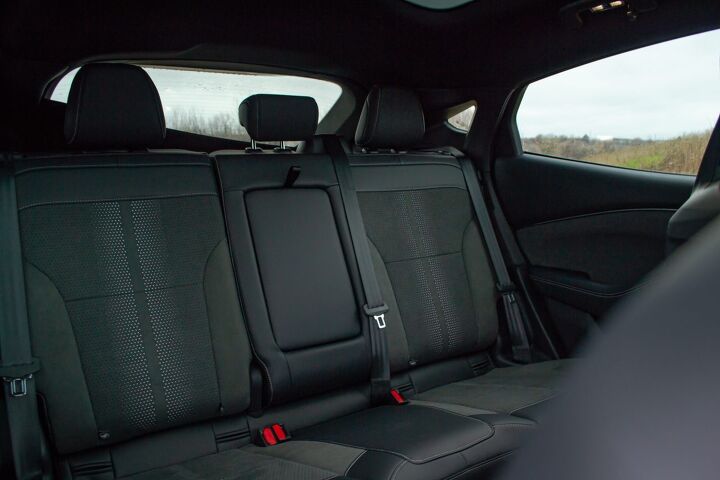




























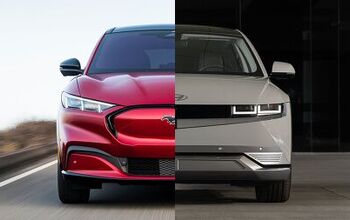
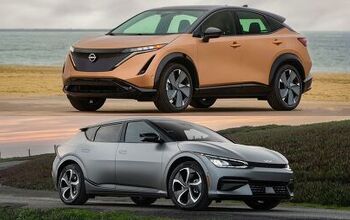


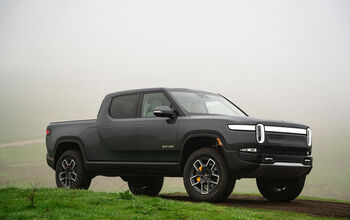

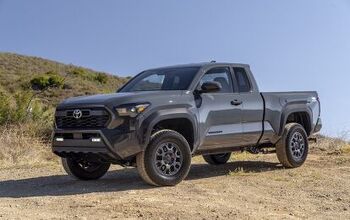


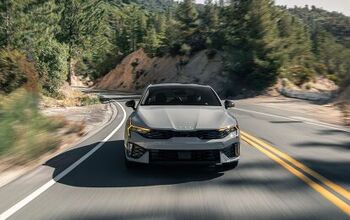
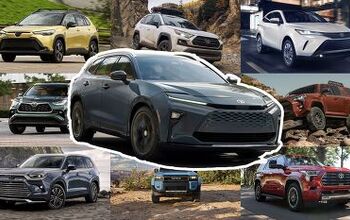
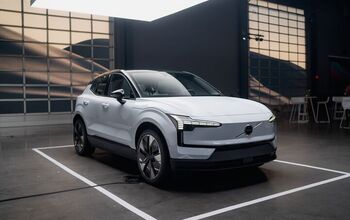
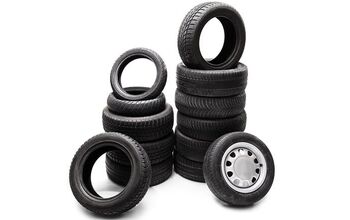
Comments
Join the conversation